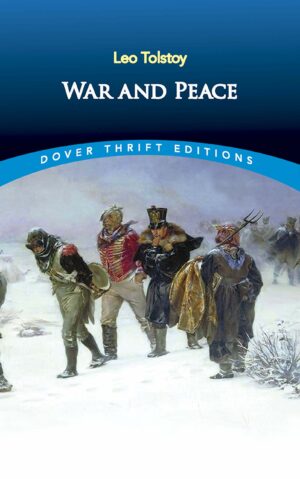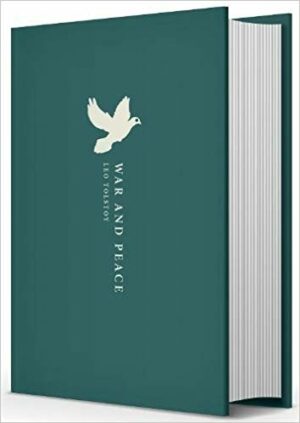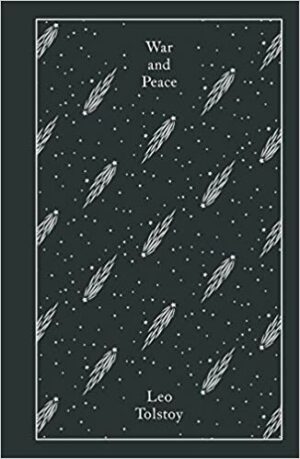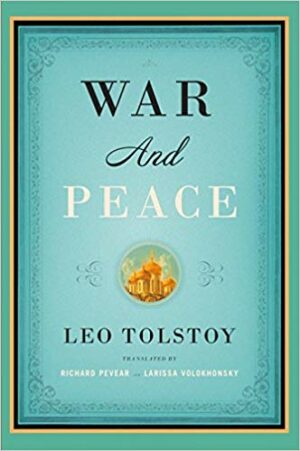What’s the best translation of War and Peace by Leo Tolstoy?
I only share books I know and love. If you buy through my links, I may earn a commission (learn more).
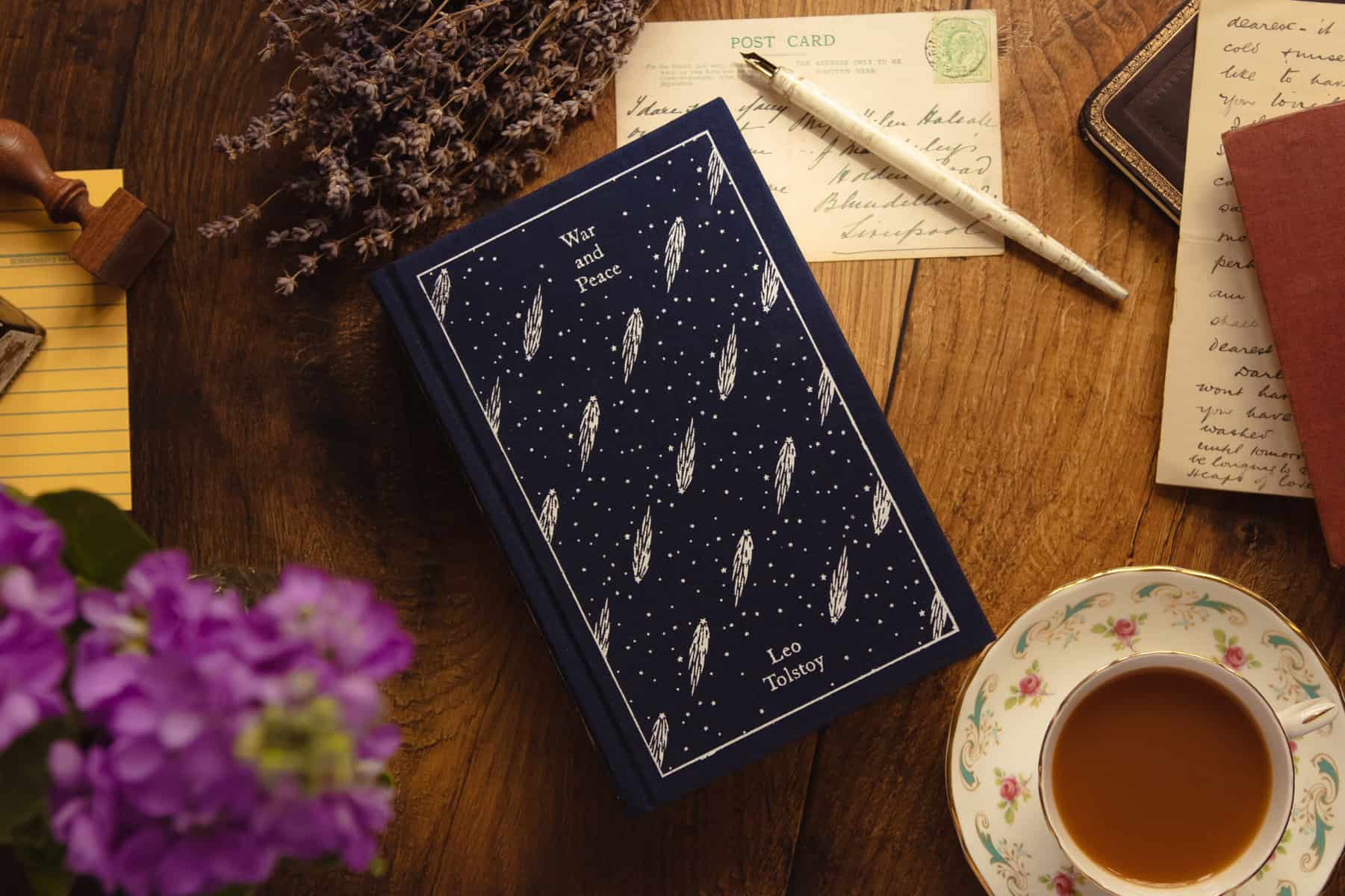
“The picture of everything that people consider to be their happiness and greatness, their sorrow and their humiliation, is complete. That is what War and Peace is.”
From NN Strakhov’s review of War and Peace, Zarya, January 1870.
It’s no secret that I love War and Peace.
I’ve shared the reasons why before, but as a recap: it’s taught me more about life than any other book, it’s beautifully written, and has even helped me through anxiety. A lot of that comes down to the translation I’ve read.
There are four good translations of War and Peace to consider, and there’s no right answer as to which one is best. They’re all good choices.
But each translation is different, and your choice influences how easy and enjoyable it is for you to read.
What’s the best translation of War and Peace?
The short answer: it depends whether you want a War and Peace that’s easier to read or a translation that’s more faithful to the original.
The summary:
- For a free version of War and Peace, choose the Maude translation (Project Gutenberg).
- For a Tolstoy-approved War and Peace, choose the Maude translation (Oxford World’s Classics).
- For a bestselling translation in American English, choose Pevear and Volokhonsky (Vintage Classics).
- For an updated War and Peace that reads smoothly in British English, choose the Briggs translation (Penguin Clothbound Classics).
My favourite is the Anthony Briggs translation: it’s the first I read and the one I fell in love with.
Read on for the long answer, comparing four of the best translations of War and Peace and sharing some translation samples to help you decide.
“If life could write, it would write like Tolstoy.”
Isaac Babel
Comparing the best translations of War and Peace by Leo Tolstoy
| Summary | |
| Constance Garnett (1904) | More literal and can seem outdated. Public domain, but so is the Maude translation (and that’s more accessible). French is translated in line. |
| Aylmer and Louise Maude (1923) | More literal and Tolstoy-approved. Handling of French depends on the editor. |
| Anthony Briggs (2005) | More idiomatic and smoothed out to be easier to read. Uses British English and translates French in line. |
| Pevear and Volokhonsky (2007) | More literal but can be clunky. American English. Translates French in footnotes. |
Constance Garnett translation – the original translation, but can be difficult to read
Garnett’s translation of War and Peace is in the public domain (archive.org), or via Dover Thrift as a paperback.
I don’t think it’s necessarily the translation you should read – it’s neither easy-to-read nor precise – but it does have an interesting backstory.
Garnett was largely a self-taught translator and lacked a lot of the dictionaries and resources that would have made translation easier. But she also had the hurdle of losing her eyesight while working on War and Peace.
She hired a secretary who would read the Russian text to her aloud, and she would dictate back the English translation.
Garnett published her translation in 1904, working on it while Tolstoy was still alive, and she once travelled to Russia to meet Tolstoy at home.
The translation received a good welcome, including by a young Hemingway, who recalls telling a friend that he could never get through War and Peace—not “until I got the Constance Garnett translation.”
However, that was before new translations of War and Peace entered the scene…
Aylmer and Louise Maude translation – the Tolstoy-approved version, now in the public domain
Critics generally say this is the most faithful translation of War and Peace. The Maudes knew Tolstoy well, spent a long time living in Moscow, and spoke impeccable Russian. Tolstoy even gave the Maudes his approval for their translation.
The Maude translation used to be more clunky, and it was criticised for including anglicised character names (Andrew, Nicolas, Mary, etc). This version is what you’ll generally find for free in the public domain, such as on Project Gutenberg.
However, Oxford World Classics revised their translation in 2010, freshening up the text, re-inserting the Russian names, and restoring the French passages that had been translated.
The splendid new Oxford World’s Classics edition of the Maude translation, edited by Amy Mandelker, is a solid choice if you’d like to read a translation of War and Peace that’s close to the original Russian.
Anthony Briggs translation – the modern, Britishised version of War and Peace
For me, the best translation of War and Peace will always be the Anthony Briggs translation. This is Penguin’s chosen translation, which they switched to from Rosemary Edmonds’s version.
Much of this is down to personal preference. The Briggs translation is written in British English, including a good deal of slang (which doesn’t bother me too much, but might infuriate others).
As with the other translations on this list, it’s a good idea to sit down with a few different editions and choose your favourite.
I’ve compared the Briggs translation to the Pevear and Volokhonsky translation before, but the summary from my own reading is that:
- The Briggs translation is less clumsy than the P&V translation
- Whether less faithful to the original or not, I simply enjoy reading the Briggs more
- The Briggs translation is more beautiful to read
- The Briggs version is a great translation for a first-time reader of War and Peace
If you choose to get a copy of the Anthony Briggs translation of War and Peace, Penguin offers a beautiful clothbound edition which I love. You can also choose a Penguin paperback edition.
My older and battered edition of War and Peace is Penguin’s earlier paperback, with a portrait of a Russian princess on the front cover.
It’s served me well and I’ll always hang on to it for sentimental reasons… but it’s also now falling apart. I’m fine with having multiple editions and translations of War and Peace on my bookshelves.
Richard Pevear and Larissa Volokhonsky translation – the bestselling but clunky (and arguably overhyped) version
The Pevear and Volokhonsky translation is by far the most marketed translation of War and Peace, especially in the United States (where the husband-and-wife translator duo benefitted from the Oprah effect).
The Pevear and Volokhonsky translation is a common choice to pick up in bookshops and it is serviceable. But I struggle reading it, and I feel it loses the magic of other translations, like Anthony Briggs’s.
Try a sample and see how you get on, but don’t be afraid of switching to other translations if you struggle.
Sample text from each War and Peace translation
| Sample text | |
| Constance Garnett (public domain: archive.org) | ‘Arrange this matter for me and I am your faithful slave for ever and ever. She’s of good family and well-off. That’s all I want.’ And with the freedom, familiarity, and grace that distinguished him, he took the maid-of-honour’s hand, kissed it, and as he kissed it waved her hand, while he stretched forward in his low chair and gazed away into the distance. |
| Aylmer and Louise Maude (public domain: Project Gutenberg) | “Arrange that affair for me and I shall always be your most devoted slave-slafe with an f, as a village elder of mine writes in his reports. She is rich and of good family and that’s all I want.” And with the familiarity and easy grace peculiar to him, he raised the maid of honor’s hand to his lips, kissed it, and swung it to and fro as he lay back in his armchair, looking in another direction. |
| Aylmer and Louise Maude (Oxford World’s Classics) | ‘Arrangezmoi cette affaire et je suis votre most faithful slave à tout jamais (“slafe” with an f– comme mon village elder m’écrit des reports). She is rich and of good family and that’s all I want.’ And with the familiarity and easy grace peculiar to him, he raised the maid of honour’s hand to his lips, kissed it, and swung it to and fro as he lay back in his armchair, looking in another direction. |
| Anthony Briggs (Penguin Classics) | ‘You set this up for me, and I’ll serve you like a faithful slave for ever. (Or slafe, with an ‘f’, as my village elder puts it when he writes to me.) She’s a girl from a good family, and she’s rich. That’s all I need.’ And with the freedom, familiarity and sheer style that were his hallmark, he took hold of the maid of honour’s hand, kissed it and gave it a little shake, easing back into his armchair and looking away from her. |
| Pevear and Volokhonsky (Vintage Classics) | “Arrangez-moi cette affaire et je suis votre faithful slave à tout jamais (slafe–comme mon village headman écrit des reports: f instead of v). She’s from a good family and rich. That’s all I need.” And with those free and familiarly graceful movements which distinguished him, he took the maid of honour’s hand, kissed it, and, having kissed it, waved the maid-of-honourly hand a little, sprawled himself in an armchair, and looked away. |
With any of the translations on this list, read the first chapter to see how you get on with the writing style before purchasing.
If you don’t get on well with it, don’t be discouraged. There might still be a time for you to love Tolstoy yet – you just need to find the right translation.
To help you read War and Peace, you can also check my guide to getting started with the book (and actually finishing it). You might also like my comparison of the best translations of Anna Karenina.

